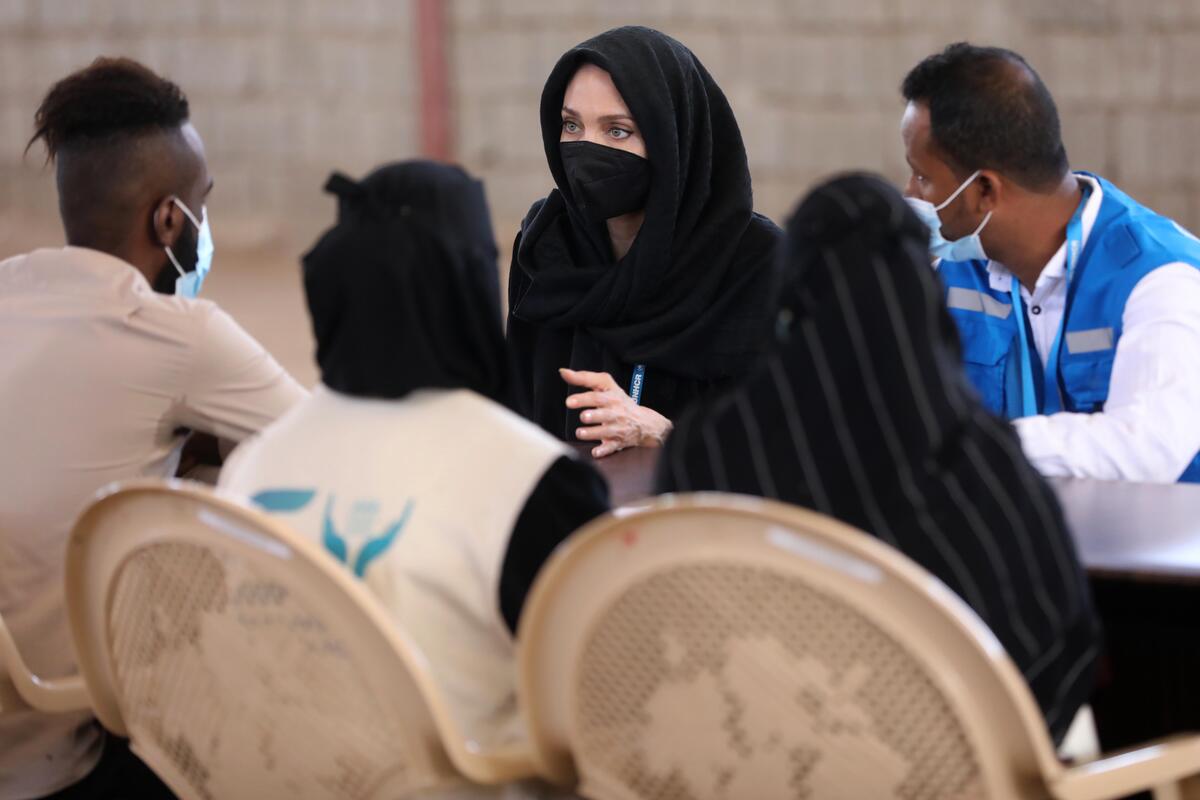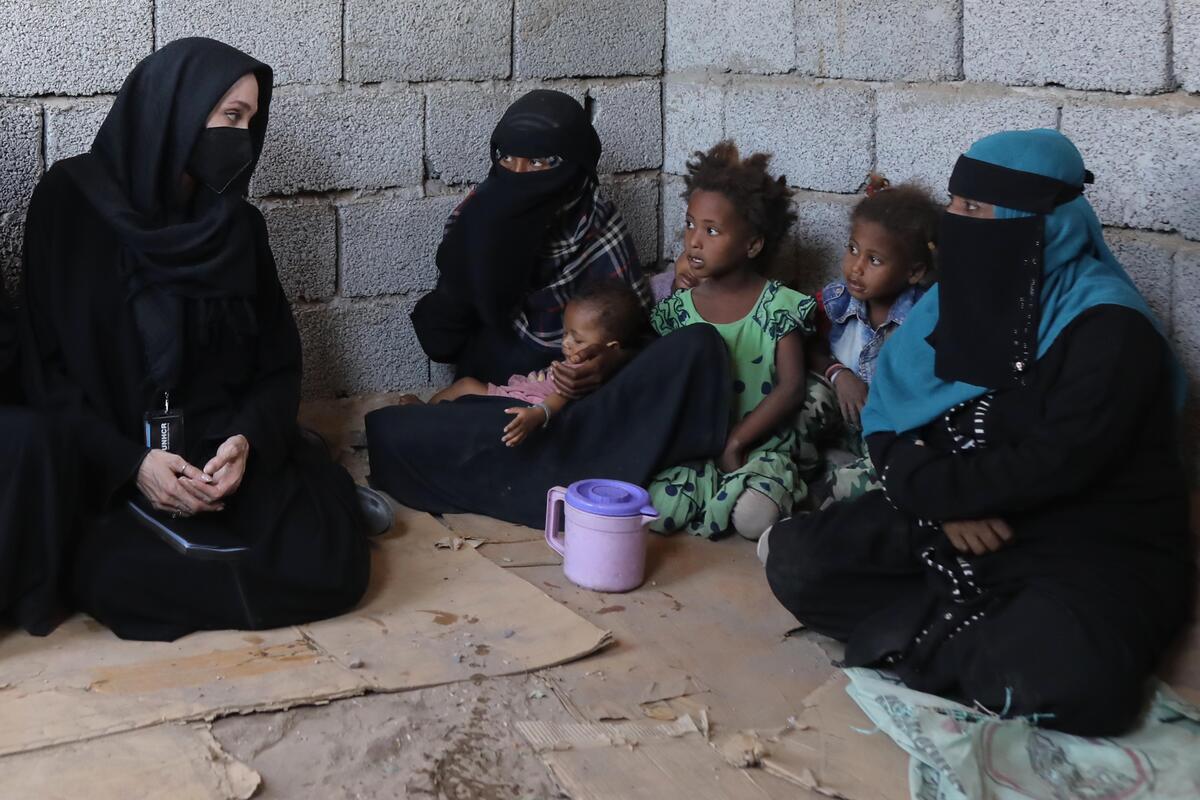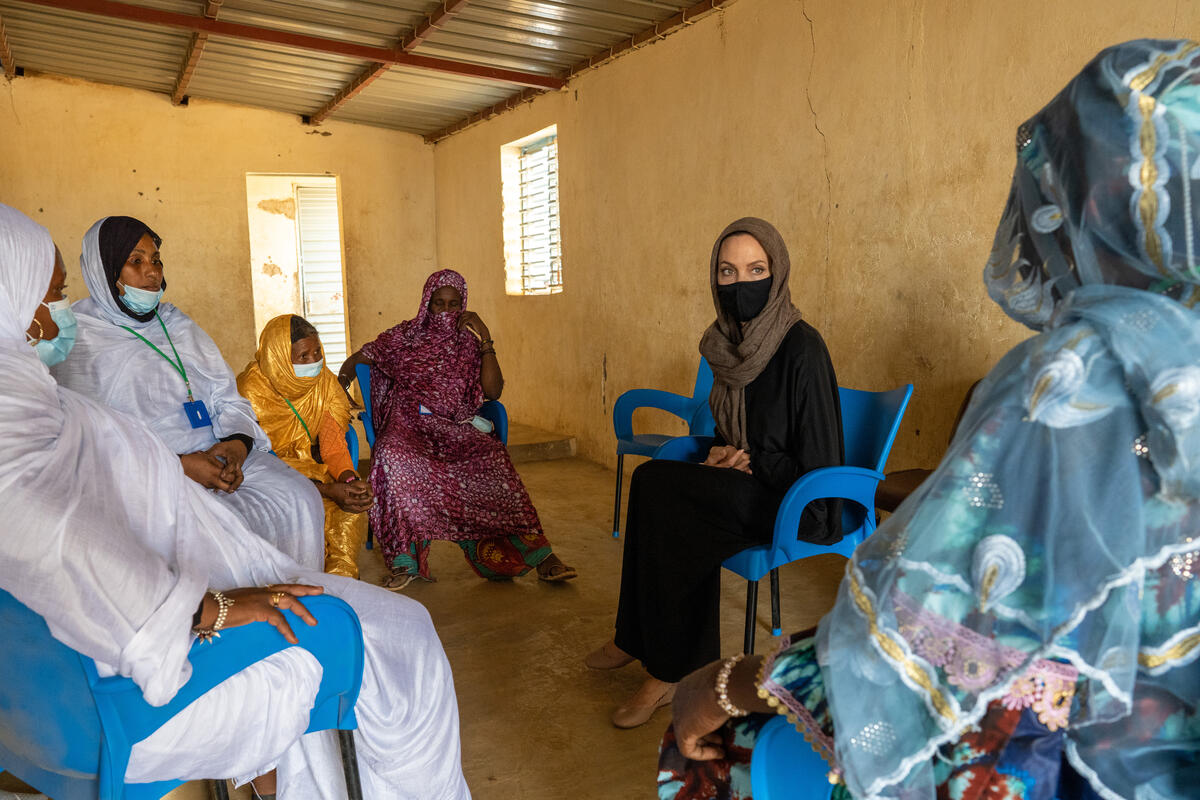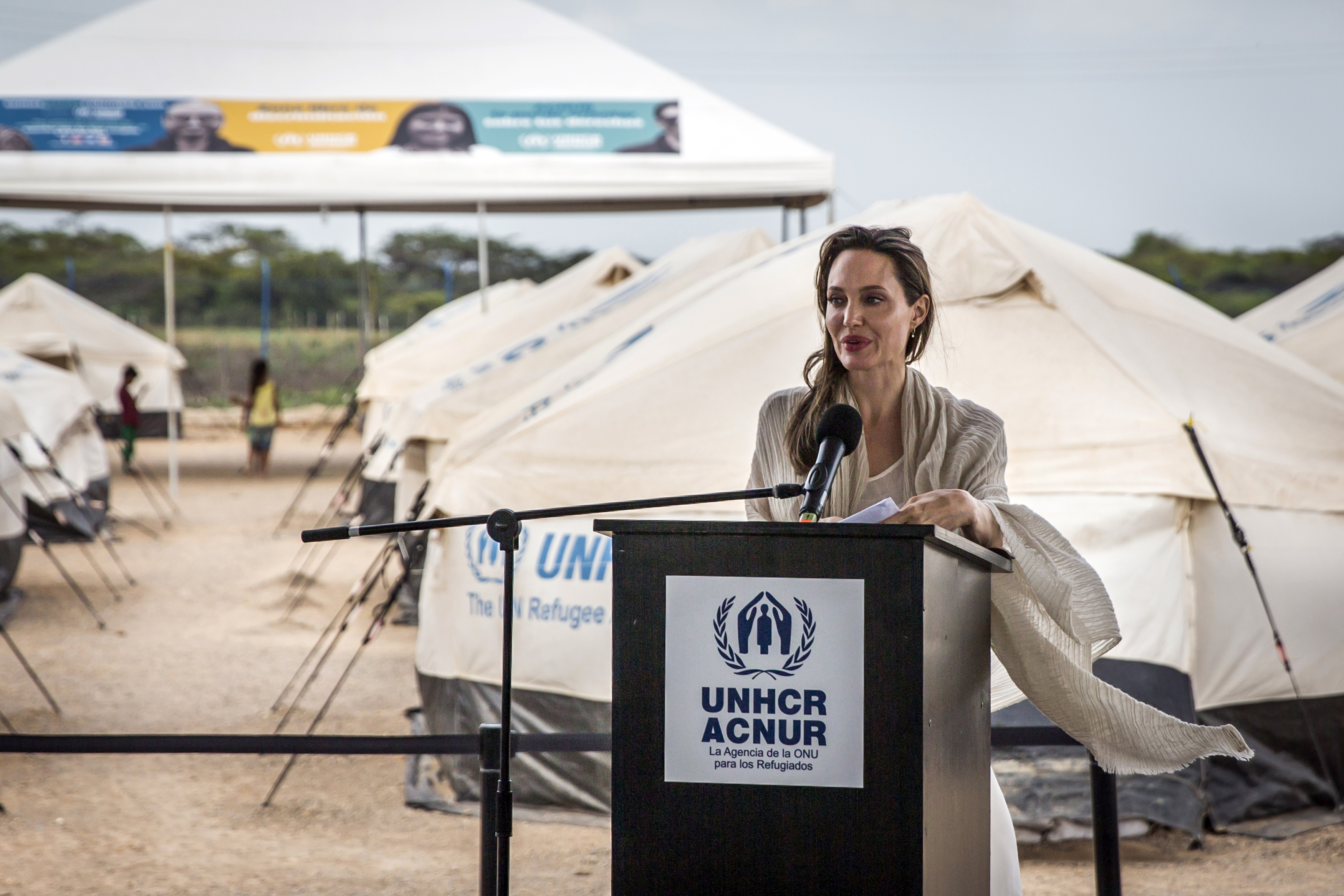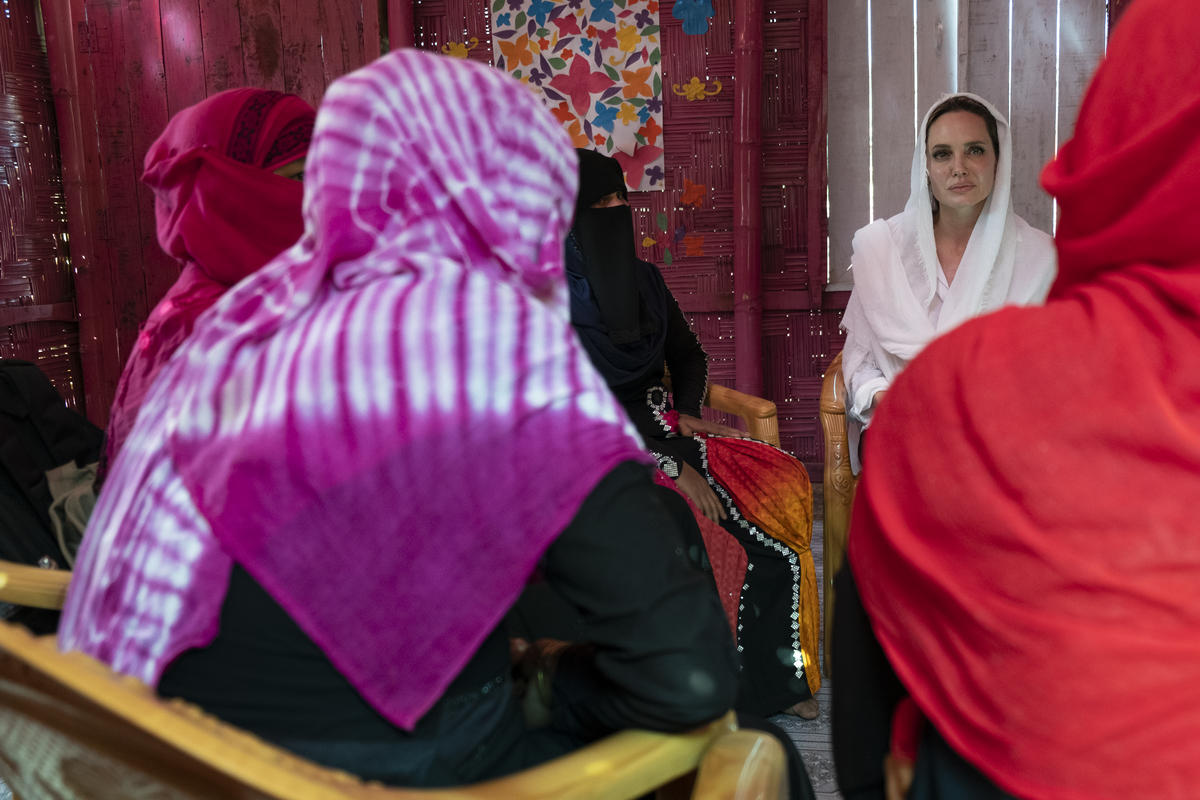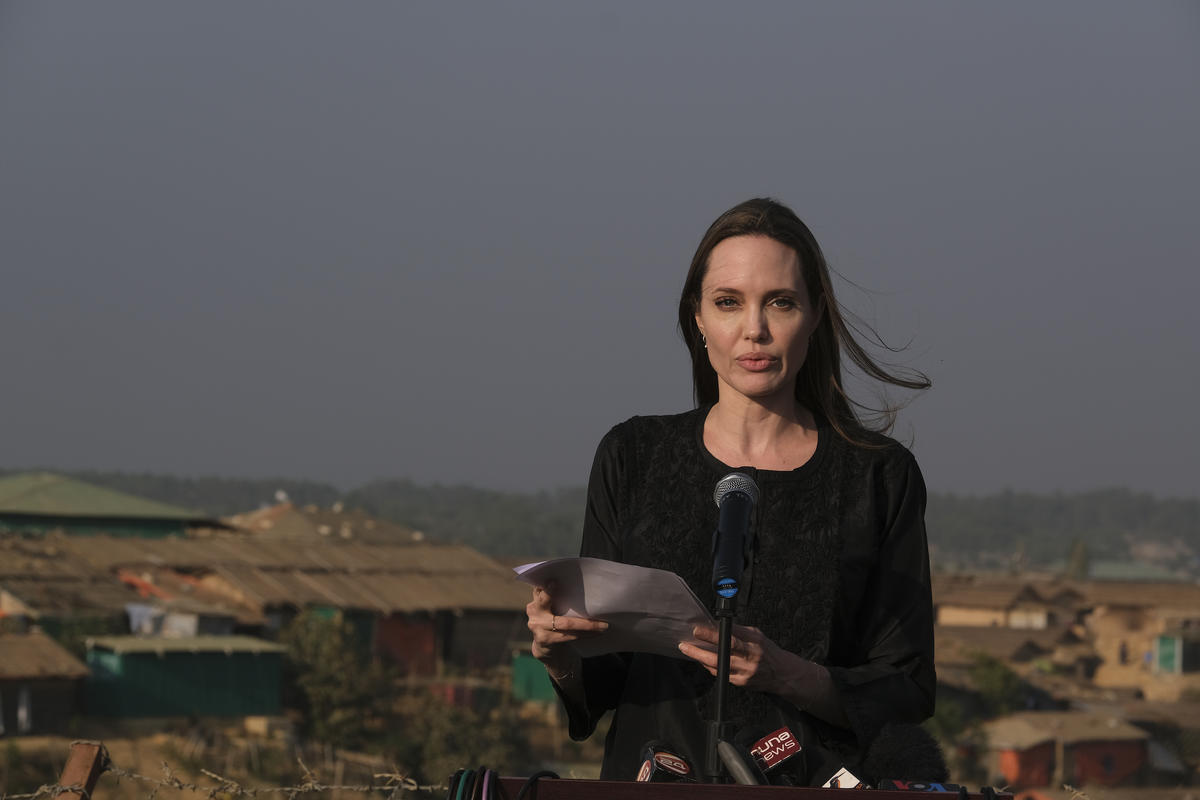Angelina Jolie visits "dire" refugee settlement on Kenyan border with Somalia
Angelina Jolie visits "dire" refugee settlement on Kenyan border with Somalia
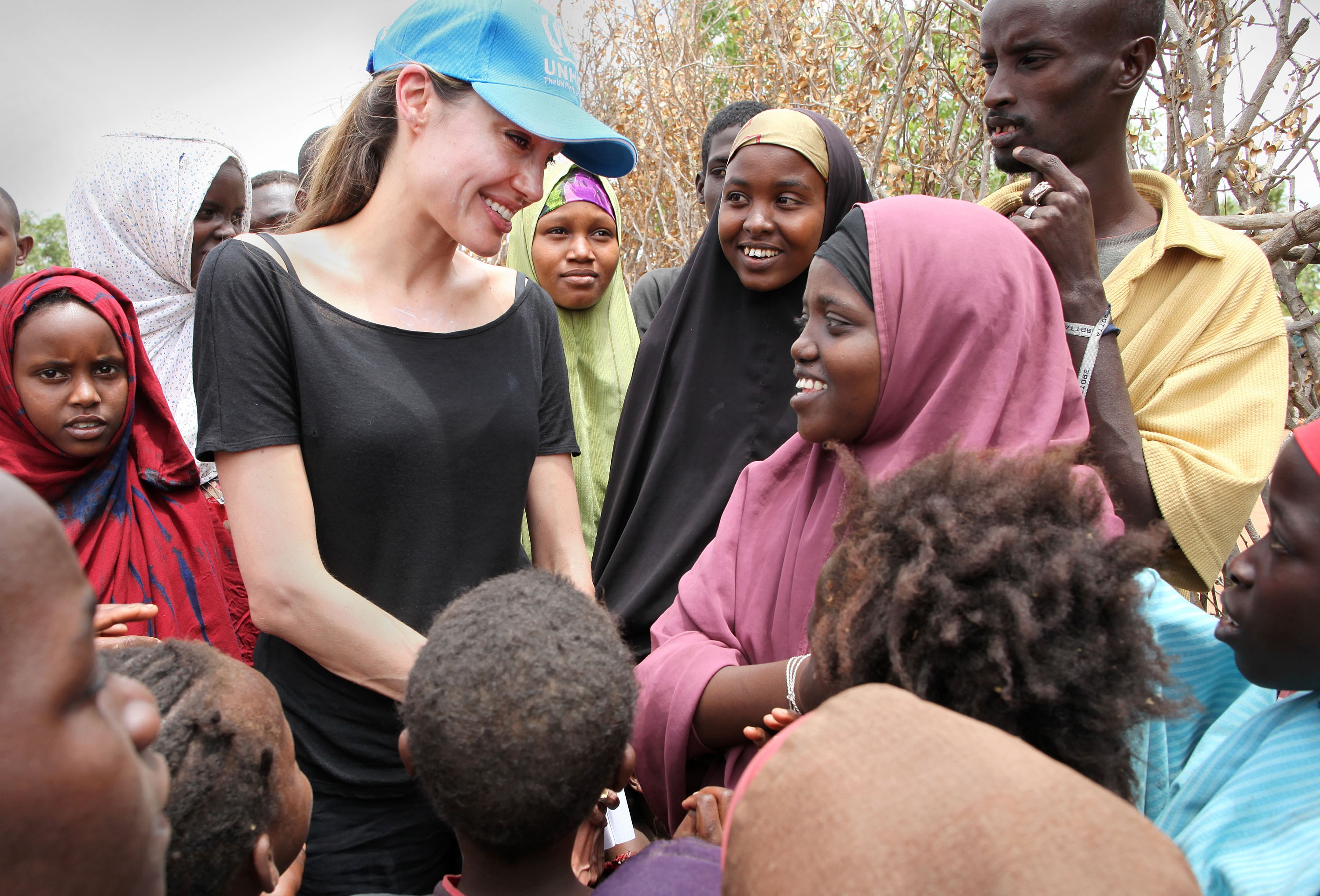
DADAAB, Kenya, September 12 (UNHCR) - UNHCR Goodwill Ambassador Angelina Jolie on Saturday visited Dadaab, the world's largest refugee settlement. Describing the three-camp complex close to north-east Kenya's border with Somalia as "one of the most dire" refugee settlements she had ever visited, Jolie said: "If this is the better solution, what must it be like in Somalia?"
Around 285,000 people live in a space originally designed for 90,000. Led by UNHCR Field Officer Maeve Murphy, Jolie heard about the struggle the agency is facing to contain a humanitarian catastrophe. On her way to visit the new arrivals area, children ran to greet Jolie. A little boy taught her the Somali handshake and children were soon giggling and offering hands for her to grasp.
Jolie met a newly arrived young woman with her three small children, two of them infants. Their distended stomachs and running noses were clear signs of their misery. Sitting down under a tree, Murphy showed Jolie the signs of malnutrition, noting that the family would go to the nearest hospital for care later in the day.
"We walked for days to escape the fighting," the mother told Jolie. Relatives came to join the party, providing relief to the young woman. One spoke English and told the acclaimed American actress, "We need space," adding that the arrival of the young woman was stretching an already overcrowded home.
When Jolie asked if the situation had deteriorated in Somalia, the surrounding crowd said it had become "much worse." The Goodwill Ambassador said she had heard "the situation in Somalia is only expected to worsen in the coming months." Fresh fighting in recent months between rebel and government forces has caused tens of thousands to flee their homes.
Travelling through the Dadaab complex, Jolie looked out of the window of her vehicle at heaps of rubbish. "There is not even enough space for a trash dump, so people live amongst garbage," she said. The car passed numerous water points with jerry cans lined up, waiting for water to arrive. Murphy explained that the huge numbers of people in the camp meant that water could only be given once every two days.
As she walked to meet another family. Jolie noticed a child pulling a water container along by a string. "We have stopped giving water containers that roll because we are so worried about contamination entering the water, spreading diseases like cholera," explained Murphy. Earlier this year a cholera outbreak at Dadaab was contained thanks to huge teams of humanitarian workers. "With up to 7,000 people arriving each month, rain on the horizon, they say it will be impossible to contain the next outbreak," warned Jolie.

Jolie chatted with UNHCR staff as they walked through the windswept, baking camp to meet the next family. Every home they passed was full of people. "There is no space left to offer, so we rely on the refugees to look after the new arrivals," said Murphy.
The visitors stopped at a home cobbled together with branches and plastic sheeting - home to three families. Under the shade of a tree, one of the families sat waiting for Jolie. Zahra, the mother, arrived in the camp last month, loaded into a wheelbarrow with her youngest child, pushed by her exhausted husband. "Luckily we found our old neighbour Anab from [the Somali capital] Mogadishu," she said, nodding to a smiling woman waiting in the doorway of a small room. "We don't have a roof though, just a place to stay," she noted.
Moving over to Anab, Jolie was invited into the small room, shafts of sunlight filtering through the dilapidated roof. After hearing Anab's description of her daily struggle to survive, with 18 people living in her small shelter, Jolie said: "it is amazing that as more and more people come into the camp they continue to be generous with what little they have."
Jolie and her UNHCR guides arrived at the next home to find three families all crammed into a small compound with a young woman lying under some shade, clearly sick. Surrounded by his children, the owner of the shelter, Mahmoud, was despondent. "We get water every two days," he complained. "Since the beginning of this year, I have had to look after two other families here, but with the same space and the same quantity of water."
UNHCR officials said 15 people survive on 100 litres of water every two days, compared to the recommended minimum of 20 litres per person per day. Looking around the compound, Jolie came away from the latrines area saying, "the toilets are already overflowing."
Before leaving Dadaab, Jolie met with UNHCR Representative to Kenya Liz Ahua, who told her: "If we don't get more land [soon], it will be impossible to avert a major humanitarian crisis." Noting that UN High Commissioner for Refugees António Guterres had received assurances in August that land would be allocated by the Kenyan government within a week. "We hope this happens soon," Ahua added.
Asked about her impressions, Jolie smiled warmly. "The Somali families I met today are full of warmth and affection. I wish more people could meet them, then they would have a stronger desire to help."
Guterres said last month that UNHCR would provide an extra US$20 million to meet the needs of refugees and the host community in Dadaab. He called for a massive injection of funds from the donor community. As an emergency measure, UNHCR has started moving around 12,000 new arrivals to a camp in northern Kenya.
By Sybella Wilkes in Dadaab, Kenya

